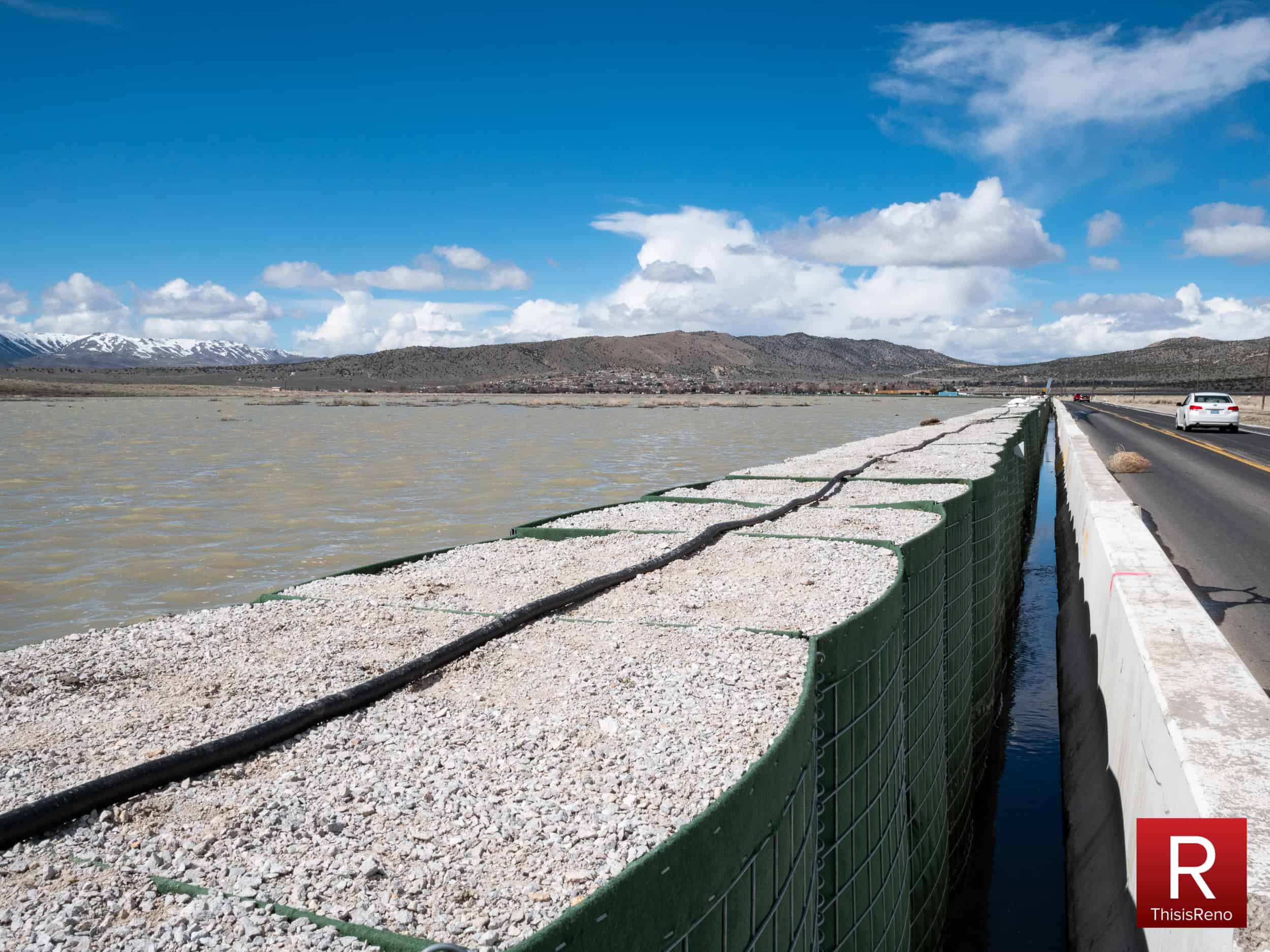
Image: Bob Conrad.
Washoe County commissioners agreed Tuesday to take steps to contain Lemmon Valley’s Swan Lake to a specified boundary, although county staff cautioned that a solution to flooding in the area hasn’t been identified and funding questions remain.
The flood-prone lake and has been a contentious issue in the North Valleys. At the end of 2017, water levels were slightly more than 4,922 feet above sea level—about 6 feet higher than in 2016, according to Desert Research Institute. The FEMA-designated flood plain threshold for that area is 4,924 feet.
Swan Lake boundaries set by commissioners would consist of Lemmon Drive on the east and north, Pompe Way on the west and Lear Boulevard to the south.
Current efforts at Swan lake include continued maintenance of existing temporary flood barriers, installation of water-filled bladder systems and continued sewer treatment plant operations. Protections are in place for this year but there are concerns about next year and future years, said Dave Solaro, assistant county manager.
“We are doing what we’d consider ‘just in time’ protections out in Swan Lake,” Solaro said. “We don’t want to go out and spend a bunch of money we may or may not need to spend. So we’re waiting long enough until it makes fiscal sense to spend the money to go out and do that work.
Washoe County has budgeted $1.2 million within the manager’s office for continuing work associated with these flood mitigations. That’s the continued maintenance of the system that was put in place to include some of these changes.”
“We need to contain the lake because the lake isn’t going anywhere.”
Solaro said the county is pursuing grants from FEMA and has reviewed input from the public on how to address rising water levels in Swan Lake. For example, he said a suggestion included trucking out water.
However, he said analysis showed trucking out 1 foot of water would take at least 2 years and up to 7.9 years depending on how many hours per day trucks operated and how many trucks were used, among other factors. By comparison, water levels can rise up to 1 1/2 feet in 24 hours. Therefore, trucking water out would be comparable to “chasing ourselves,” Solaro said.

Commissioners will need to approve a funding strategy for containing the lake, Solaro said.
“Currently I feel like you’re asking me to buy a certain number of apples and I don’t have all the information…,” Solaro told commissioners. “I don’t know which color apples. I don’t know how much money I have to buy
Several commissioners said they’d like a cost analysis on containing the lake’s boundaries. The county’s emergency fund is drained and next year’s budget isn’t looking bright either, Commissioner Kitty Jung said. She suggested bringing in a subject matter expert who can address flooding, such as providing information on how water is removed from cities such as Houston and New Orleans after hurricanes.
Commissioner Marsha Berkbigler said homes and Lemmon Valley Elementary School need protection and that water there won’t evaporate fast enough.

Marsha Berkbigler.
“We need to contain the lake because the lake isn’t going anywhere,” Berkbigler said.
Working with the state and federal governments takes time, too. There’s a federally-owned 1,360 acre parcel on the east side of Swan Lake, although commissioners said it’s not possible for the county to do whatever it wants with the land.
“We’d have to look an at EIS (Environmental Impact Statement) on that parcel, we’d have to get wildlife involved because the feds will ask if it’s sage grouse habitat…,” Commission Chairman Vaughn Hartung said. “As a way to solve this problem I look at elevating Lemmon Drive. Elevation is the question. What’s the appropriate height for that? Also, approach FEMA for the north and south end for pre-disaster mitigation grants.”
Solaro said he’s working with engineers and bring back a matrix to commissioners that will include schedules and funding strategies based on suggestions.

